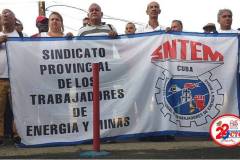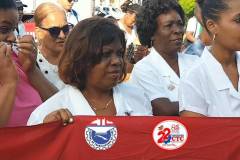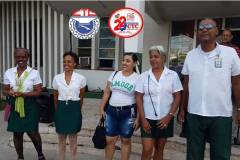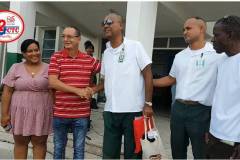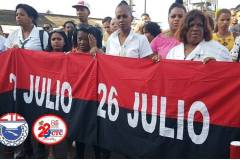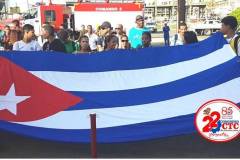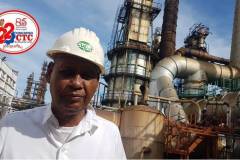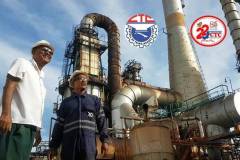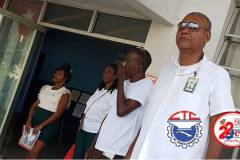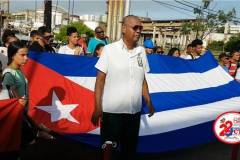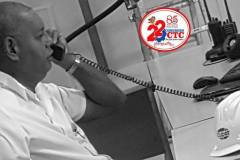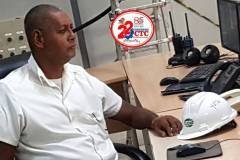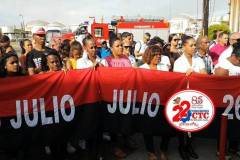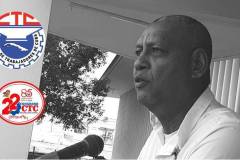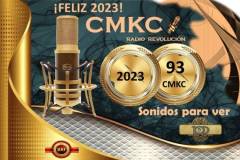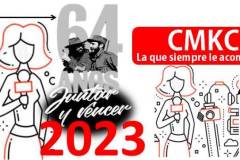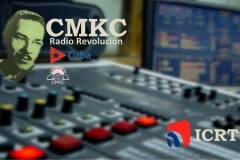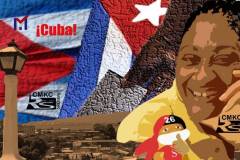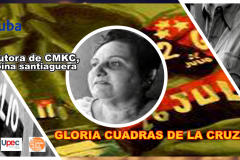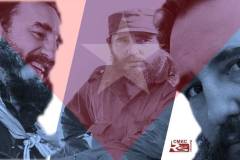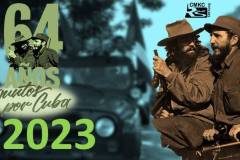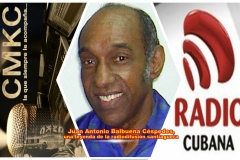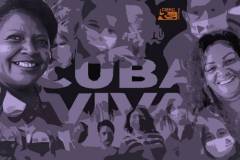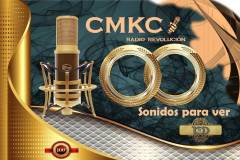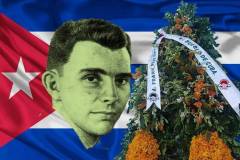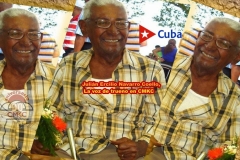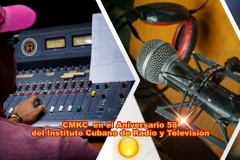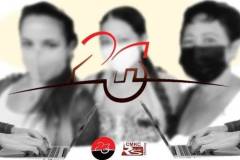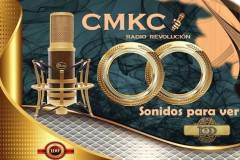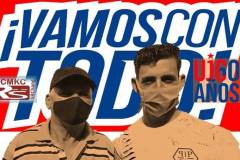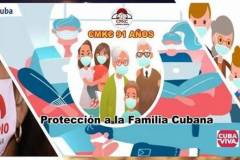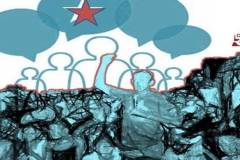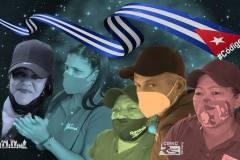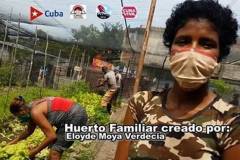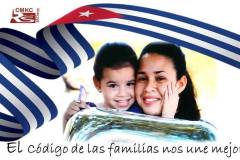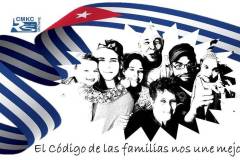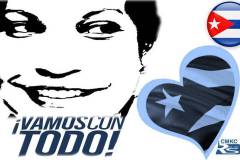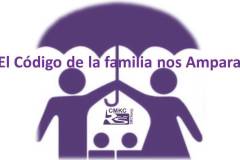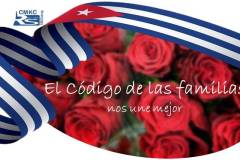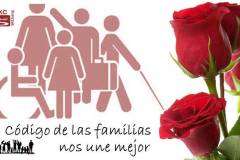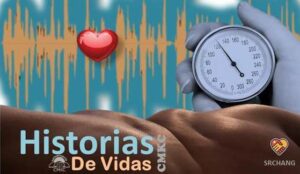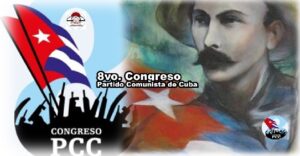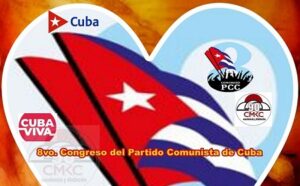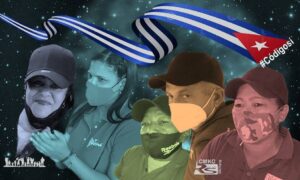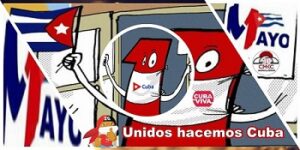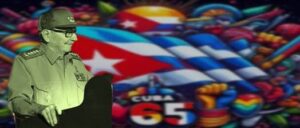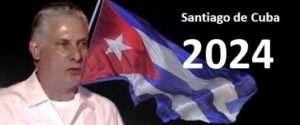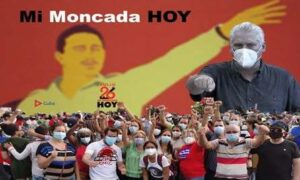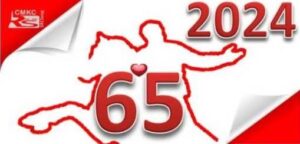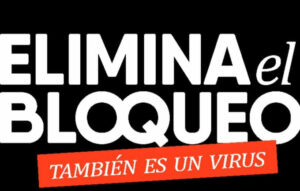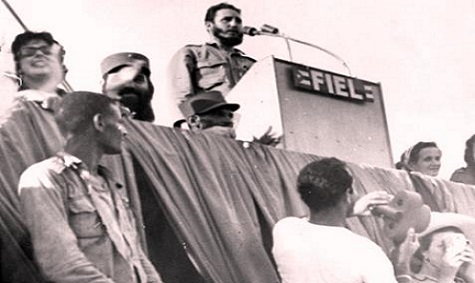
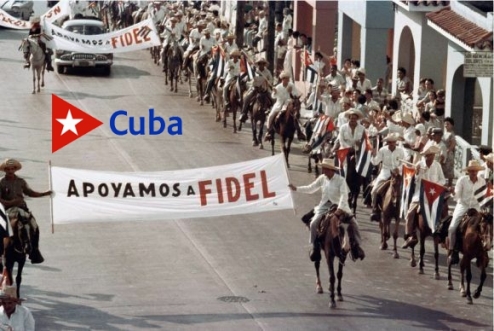
In the town of Las Mercedes, in the foothills of the Sierra Maestra, the 7th anniversary of the attacks on the Moncada garrison in Santiago de Cuba and the Carlos Manuel de Cespedes in Bayamo on July 26, 1953 was commemorated in 1960. The rally was attended by more than one million people.
To move from the west to the eastern province about 500,000 countrymen with the revolutionary slogan of To the Sierra with Fidel on July 26, it was necessary the intense and organized work of the members of the 7th Anniversary Organization Committee with members of the Cuban Workers Federation; the July 26 Movement; the Federation of Cuban Women; and the National Revolutionary Militias, among other organizations.
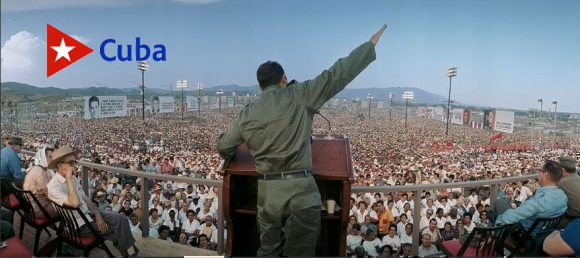
The people accepted the challenge of the gigantic revolutionary mobilization with enthusiasm, since they would have the opportunity to visit one of the historical places of the Sierra Maestra, Las Mercedes, where the Rebel Army won a decisive victory in a heroic battle that lasted seven days against an enemy, much superior in men and in weapons.
The 7th Anniversary Organization Committee created sub-committees of Transportation, Food, Lodging, Prevention and Assistance, and Orientation. Each of these committees was in charge of organizing and solving the problems that might arise.
On the initiative of the people, the Committee agreed to collect food and money so that the State would not have to face alone the considerable expenses that the mobilization would cause.
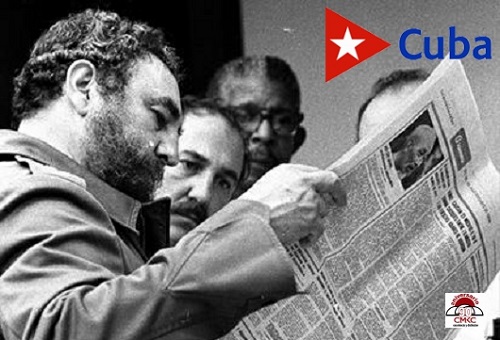
COMMITTEE GUIDELINES
From July 15, people would request transportation to Las Mercedes. Registration desks were set up at central points in Havana, as well as in other provinces.
The workers would register through their unions. If you had a car you could use it and transport others
From July 20, transportation cards were given to be used in the different means of transport trains, trucks, or buses.
The transportation left Havana on 22, 23 and 24, from the places and at the time they were scheduled.
The militias ensured safety on the road. Cranes and mobile workshops were set up to repair any breakages that might occur during the trip.
OPERATION INVOICE
Since 13 July, offices were set up in central areas of Havana for the collection of food, mainly canned goods, to be distributed to those who could not return after the meeting due to lack of transport. Several trucks toured around the capital and its neighboring municipalities to facilitate the delivery of donations
SEVENTH ANNIVERSARY BONDS
Bonds worth $1, $2, $3, $5 and $10 pesos were put up for sale. «The organization of this event requires great expenses, which should not fall on the State, but should be absorbed by the revolutionary masses themselves»
PERSONAL BELONGINGS
Carry a backpack, hammock or cot. Canteen, toiletries. Yarey hat and at least one change of clothes. Food for the trip and stay.
A caravan with more than 500 trucks with sugar workers left Guanajay on the 22nd with workers from the Merceditas, Pilar, San Ramón, Orozco, Niagara, San Cristóbal, Bahía Honda, Andorra and La Francia sugar mills in Pinar del Río; it would pick up agricultural and industrial workers from the Havana plants in Madruga and those from Matanzas in Colón.
The caravan will stop in Sancti Spiritus, to receive the sugar workers from Las Villas and in Guáimaro, those from the province of Camaguey would join them.
On July 24, the city of Santiago de Cuba was full of visitors and the caravans continued to arrive. Reaching Las Mercedes was difficult because all the roads were crowded with vehicles of all kinds that transported the enthusiastic rally attendants.
THE RALLY IN LAS MERCEDES
Meanwhile in Las Mercedes, despite the heavy rains there on the 25th, in El Caney and its surroundings, hundreds of thousands of people were camping out waiting for the beginning of the festivities.
It was a sunny day on Tuesday, July 26th. A huge multitude of people gathered in a disciplined manner in front of the improvised platform. For the foreign guests it was impressive to hear the voices of more than a million people who, carrying posters with revolutionary slogans, chanted over and over again: Country or death. We shall overcome! Cuba yes, Yankees no!
At noon the event began with a parade of flag bearers, of young workers, and the gigantic «Human Flag», formed by women dressed in the colors of our national flag.
The children of the Camilo Cienfuegos School City, the Peasant, Workers and Women’s Militias also paraded. And a group of paratroopers jumped into space, in an exciting show.
In addition, officers from the Rebel Army who were training at the Revolutionary Armed Forces (FAR in Spanish) school in Minas de Frio and 1,700 volunteer teachers marched, followed by a group of peasants who showed the public their land titles to those who had been handed over by the National Institute of Agrarian Reform (INRA in Spanish).
The public gave a standing ovation to a young man carrying an Olympic torch that was taken from the town of Pica Pica, in Pinar del Rio, and escorted by other young people on his journey through towns and cities to Las Mercedes.
The parade, which lasted approximately five hours, was closed by an immense peasant cavalry that with their machetes held high shouted revolutionary slogans.
Then Ciro Rodríguez, a student of the “Camilo Cienfuegos” School Complex, made a brief speech, and then Fidel made the keynote address for the gigantic concentration. Ciro Rodríguez, among other things, said: «…all the students of this School Complex are proud, because it has been done for those twenty thousand who fell in the Revolution.
They are twenty thousand students who come to study and we come to recover those twenty thousand who died in the Revolution…», at the end of his words, the peasant student was applauded for several minutes by the crowd.
In the Sierra Maestra with Fidel
In the town of Las Mercedes, in the foothills of the Sierra Maestra, the 7th anniversary of the attacks on the Moncada garrison in Santiago de Cuba and the Carlos Manuel de Cespedes in Bayamo on July 26, 1953 was commemorated in 1960. The rally was attended by more than one million people.

To move from the west to the eastern province about 500,000 countrymen with the revolutionary slogan of To the Sierra with Fidel on July 26, it was necessary the intense and organized work of the members of the 7th Anniversary Organization Committee with members of the Cuban Workers Federation; the July 26 Movement; the Federation of Cuban Women; and the National Revolutionary Militias, among other organizations.
The people accepted the challenge of the gigantic revolutionary mobilization with enthusiasm, since they would have the opportunity to visit one of the historical places of the Sierra Maestra, Las Mercedes, where the Rebel Army won a decisive victory in a heroic battle that lasted seven days against an enemy, much superior in men and in weapons.
The 7th Anniversary Organization Committee created sub-committees of Transportation, Food, Lodging, Prevention and Assistance, and Orientation. Each of these committees was in charge of organizing and solving the problems that might arise.
On the initiative of the people, the Committee agreed to collect food and money so that the State would not have to face alone the considerable expenses that the mobilization would cause.
COMMITTEE GUIDELINES
From July 15, people would request transportation to Las Mercedes. Registration desks were set up at central points in Havana, as well as in other provinces.
The workers would register through their unions. If you had a car you could use it and transport others
From July 20, transportation cards were given to be used in the different means of transport trains, trucks, or buses.
The transportation left Havana on 22, 23 and 24, from the places and at the time they were scheduled.
The militias ensured safety on the road. Cranes and mobile workshops were set up to repair any breakages that might occur during the trip.
OPERATION INVOICE
Since 13 July, offices were set up in central areas of Havana for the collection of food, mainly canned goods, to be distributed to those who could not return after the meeting due to lack of transport. Several trucks toured around the capital and its neighboring municipalities to facilitate the delivery of donations
SEVENTH ANNIVERSARY BONDS
Bonds worth $1, $2, $3, $5 and $10 pesos were put up for sale. «The organization of this event requires great expenses, which should not fall on the State, but should be absorbed by the revolutionary masses themselves»
PERSONAL BELONGINGS
Carry a backpack, hammock or cot. Canteen, toiletries. Yarey hat and at least one change of clothes. Food for the trip and stay.
A caravan with more than 500 trucks with sugar workers left Guanajay on the 22nd with workers from the Merceditas, Pilar, San Ramón, Orozco, Niagara, San Cristóbal, Bahía Honda, Andorra and La Francia sugar mills in Pinar del Río; it would pick up agricultural and industrial workers from the Havana plants in Madruga and those from Matanzas in Colón.
The caravan will stop in Sancti Spiritus, to receive the sugar workers from Las Villas and in Guáimaro, those from the province of Camaguey would join them.
On July 24, the city of Santiago de Cuba was full of visitors and the caravans continued to arrive. Reaching Las Mercedes was difficult because all the roads were crowded with vehicles of all kinds that transported the enthusiastic rally attendants.
THE RALLY IN LAS MERCEDES
Meanwhile in Las Mercedes, despite the heavy rains there on the 25th, in El Caney and its surroundings, hundreds of thousands of people were camping out waiting for the beginning of the festivities.
It was a sunny day on Tuesday, July 26th. A huge multitude of people gathered in a disciplined manner in front of the improvised platform. For the foreign guests it was impressive to hear the voices of more than a million people who, carrying posters with revolutionary slogans, chanted over and over again: Country or death. We shall overcome! Cuba yes, Yankees no!
At noon the event began with a parade of flag bearers, of young workers, and the gigantic «Human Flag», formed by women dressed in the colors of our national flag.
The children of the Camilo Cienfuegos School City, the Peasant, Workers and Women’s Militias also paraded. And a group of paratroopers jumped into space, in an exciting show.
In addition, officers from the Rebel Army who were training at the Revolutionary Armed Forces (FAR in Spanish) school in Minas de Frio and 1,700 volunteer teachers marched, followed by a group of peasants who showed the public their land titles to those who had been handed over by the National Institute of Agrarian Reform (INRA in Spanish).
The public gave a standing ovation to a young man carrying an Olympic torch that was taken from the town of Pica Pica, in Pinar del Rio, and escorted by other young people on his journey through towns and cities to Las Mercedes.
The parade, which lasted approximately five hours, was closed by an immense peasant cavalry that with their machetes held high shouted revolutionary slogans.
Then Ciro Rodríguez, a student of the “Camilo Cienfuegos” School Complex, made a brief speech, and then Fidel made the keynote address for the gigantic concentration. Ciro Rodríguez, among other things, said: «…all the students of this School Complex are proud, because it has been done for those twenty thousand who fell in the Revolution.
They are twenty thousand students who come to study and we come to recover those twenty thousand who died in the Revolution…», at the end of his words, the peasant student was applauded for several minutes by the crowd.
In the Sierra Maestra with Fidel

The CIA and illegal communication networks for subversion in Cuba
Author: Santiago Romero Chang Published Date: 14 mayo 2021 Leave a Comment on The CIA and illegal communication networks for subversion in CubaEdit The CIA and illegal communication networks for subversion in Cuba
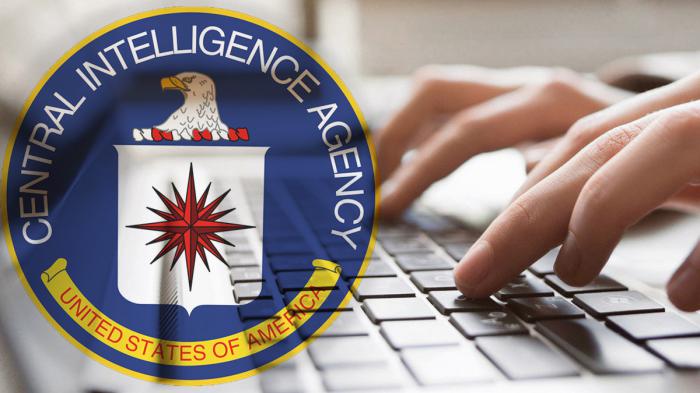
As of 2007, the CIA considered as a matter of first importance to guarantee Internet access in Cuba, without control of the Government or Cuban telecommunications companies.
As of 2007, the CIA considered as a matter of first importance to guarantee Internet access in Cuba, without control of the Government or Cuban telecommunications companies. Agents and contractors traveled to the island in order to investigate the operation of illegal networks for connection to satellite television and, based on studies carried out in the field, propose how to turn them into internet access networks.
As part of the program, they ordered to put into operation ten BGAN (Broadband Global Area Network) equipment in Cuban territory, which according to their calculations would allow reducing expenses for other activities. The International Republican Institute (IRI) received the guidance to evaluate its budget in this regard and make recommendations to the USAID with long-term perspectives.
One of the aforementioned BGANs was handed over to a CIA agent in Havana to send daily, securely, information on the ability of the Minint and Mincom to detect illegal satellite television connection «antennas». They also required information on the movements of the FAR troops in certain regions of the country and the characterization of leaders and cadres of the Revolution.
The BGAN allowed the establishment of illegal communication networks for the transmission of data that would link its agent with cell phones and laptops in different parts of Havana.
In the Sierra Maestra with Fidel
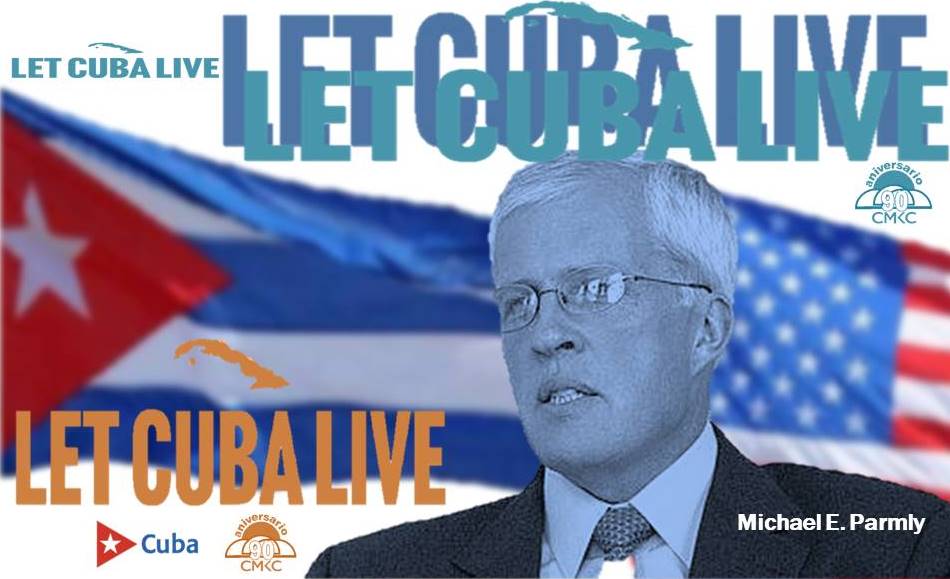
The CIA needed information and, as they do in countless countries considered to be of interest to the US Government, they decided to guarantee access to the network of networks, not to facilitate development but to strengthen control, through technological dominance and content, Big Data studies, among others, as well as successfully developing media campaigns against Cuba.
Another element of utmost importance for their plans to dominate the island’s cyberspace and other activities of subversion and espionage, was the carrying out of a survey program, created by the US Government. “This project constitutes a strategic planning tool that can emphasize the attention that the island’s leaders offer to issues that are really important to the population.
The International Republican Institute used different methods to distribute the polls and receive important results about them. He focused on two general audiences:

